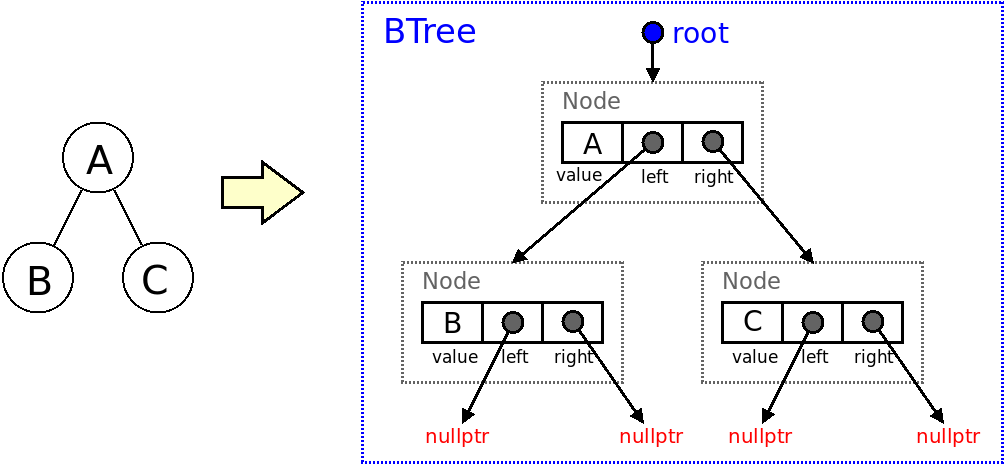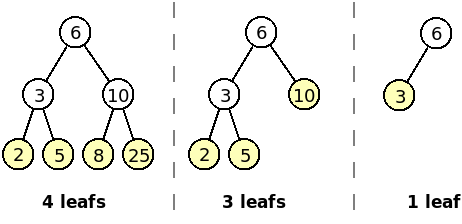 [AED032] Counting Leafs
[AED032] Counting LeafsIn what concerns the continuous evaluation solving exercises grade during the semester, you should submit until 23:59 of November 30th
(this exercise will still be available for submission after that deadline, but without couting towards your grade)
[to understand the context of this problem, you should read the class #07 exercise sheet]
 [AED032] Counting Leafs
[AED032] Counting LeafsIn this problem you should only submit a binaryTree.h file with a self-containing definition of a class BTree<T>
Use as a basis the class BTree<T> (see code | download code) which implements a generic binary tree that was explained in classes, with methods to read a tree from standard input, to write several node traversals, to count the number of nodes, to compute the height and to see if it contains a certain value.
Add a new method int numberLeafs() to the class. The function should return the number of leafs of the tree. Recall that a leaf is a node with no children nodes. For instance, the trees in the following have respectively 4, 3 and 1 leafs (indicated in yellow).

You should submit the file binaryTree.h with the method numberLeafs added to binaryTree<T> as requested (and without removing any of the other existing methods). You can however create additional methods, if you need them.
Mooshak will use the following code to link to your class, read the inputs, build the trees and call your method, printing its result.
#include <iostream> #include <string> #include "binaryTree.h" // Read a tree of type t assuming "N" as the null value // call t.numberLeafs() method and write its output template <typename T> void read() { BTree<T> t; t.read("N"); std::cout << "t.numberLeafs() = " << t.numberLeafs() << std::endl; } int main() { int n; std::cin >> n; for (int i=0; i<n; i++) { std::string type; std::cin >> type; if (type == "int") read<int>(); else if (type == "string") read<std::string>(); } return 0; }
| Example Input | Example Output |
3 int 6 3 2 N N 5 N N 10 8 N N 25 N N int 6 3 2 N N 5 N N 10 N N int 6 3 N N N |
t.numberLeafs() = 4 t.numberLeafs() = 3 t.numberLeafs() = 1 |
The example input corresponds to the trees in the example figure given in the problem description.